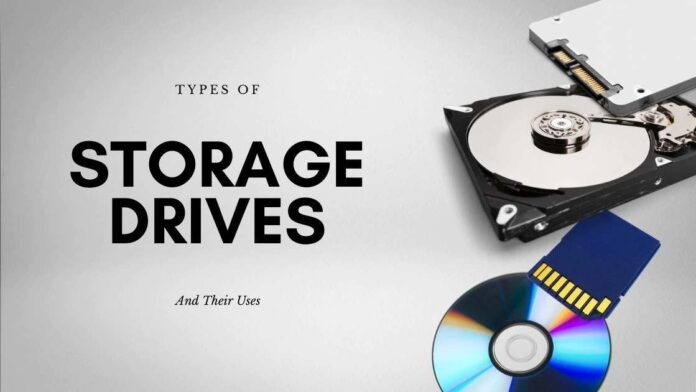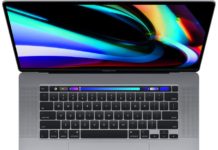Over the past year, almost everyone has completely changed the way they work. People have sought after a one-stop solution for work, play, and productivity, straight from their homes. But one aspect of their setup that tends to be overlooked is storage. Chances are that your machine either equips a large solid-state drive (SSD) or a smaller SSD with a large hard disk drive (HDD). But it is important how you use this combination of storage. With your data increasing as you read this, managing it to suit your workflow is the best thing you can do to increase long-term productivity.
Storing your operating system
The most popular operating systems (OS) these days are Windows, macOS, or Linux. And in each case, your OS needs to be inside an SSD. As a Windows user myself, installing the OS on an SSD has made sure that boot-up times and loading times are far reduced. For example, when Windows is stored on an SSD, the average boot-up time for a machine is 10-15 seconds, compared to a much slower 30-40 second boot-up time on an HDD. Therefore, even installing a brand-new SSD to store an OS on an older laptop can rejuvenate performance to a good extent.
What about my essentials?
Depending on the type of work you do, allocating programs to either your SSD or HDD is useful to practice. If you are a content creator who uses Premiere Pro and Photoshop from Adobe’s Creative Cloud regularly, having these on an SSD greatly improves loading times and performance. This is because a typical SSD has an average read/write speed of 400MB/s, which is four times faster than an average HDD, meaning faster access to your files. Likewise, if you deal with a lot of data-driven work, you could consider storing Microsoft Excel, Access, and PowerBI on your SSD. In either case, storing your most used programs on an SSD is seen as best practice.
Does multimedia need to load fast?
We often have a digital collection of our music, movies, and images saved on our machines. But the benefit of storing these on an SSD is barely any compared to if you store a program purely because this is an inefficient use of expensive storage. Since we often access our multimedia collections infrequently, we will rarely take advantage of the high speeds an SSD brings. Thus, it is best practice to use a 500GB or 1TB HDD for this. With the average HD movie ranging between 3-5GB and images being much smaller, a 1TB drive should be enough for all your multimedia files as well as for any system backups.
The idea of price per gigabyte
Having discussed both HDD and SSD storage solutions, it is important to address pricing. Typically, an SSD is more expensive than an HDD due to its faster speeds. However, if you are looking for the most storage, an HDD will give you the best price per gigabyte. For example, a typical 2TB HDD like the Seagate BarraCuda costs Dh218 or about 11 fils per GB. In comparison, only a 500GB SSD like the WD Blue costs Dh195, which is about 40 fils per GB. So, with an HDD, not only are you getting more absolute storage but also more value for your storage.
Gaming storage solutions
For intensive gaming purposes, the choice between SSD and HDD usage is a bit more difficult to make. Popular titles such as Call of Duty: Warzone take well above 150GB to store on your machine. The need for larger amounts of storage obviously makes using an HDD cheaper here. However, you will often find gaming PCs equipped with 2-3 different SSD solutions. One to house the OS with the others to equip your favorite games. For instance, the WD Black is a great choice for the latter especially thanks to its 7,000MB/s read and 5,300MB/s write speeds. On top of that, the gaming PC could also use an additional HDD for storing all other data. Of course, a solution like this will not come cheap.
How about console gaming storage?
As we progress further into the era of next-gen gaming consoles like the Sony PlayStation 5 and the Microsoft Xbox Series X, you will be surprised to note that even these do not offer a full storage solution. Much like a typical gaming PC, we talked about earlier, you will need to consider storage allocation. Respectively, the usable storage on the PlayStation 5 and Xbox Series X is 667GB and 802GB. With the average size of a typical game being 50GB, you will be restricted at some point. Thankfully, both the console systems support internal memory expansion which is not a necessity on day one. But when you eventually must, the PlayStation 5 will use either a Sony-certified NVMe SSD or an internal PCIe Gen 4 M.2 NVMe SSD capable of 5.5GB/s bandwidth. Unfortunately, Sony is yet to confirm exactly which drives the console will support. As for the Xbox Series X, users will have to rely on the Seagate Storage Expansion Card made specifically for the console.
External storage drives
When you are out ways to expand the internal storage, looking at external storage is a great way to carry your data with you. External SSDs do not take up any of your machine’s internal storage and are great for transfers and backups. Most offer connectivity via Type-C USB or Type-A USB 3.1, 3.0, and 2.0. Unless you are an on-the-go content creator, an SSD for external storage is not a necessity. An HDD like the WD My Passport or the Toshiba Canvio Advance costs just shy of Dh150, for 1TB of storage which is excellent value for money.
Longevity of your storage
The debate between SSD and HDD storage does not just hinge on price and performance. Depending on how you use storage, you will need to keep in mind that SSDs wear out quickly over time. This is due to a technology built into SSDs that helps optimize read/write cycles. HDDs will eventually wear out as well since they use physical recording methods to store data. Both have their cons but from a technical standpoint, an HDD will typically last longer than an SSD.
Security measures
External storage solutions from both WD and Seagate provide valuable security to keep sensitive data from reaching others’ hands. In WD drives, this includes a rugged build quality, unlock only via authorized devices, and high-grade 256-bit AES-XTS hardware encryption. As for Seagate’s solutions, Auto-Lock automatically locks a drive and secures its data the instant it is removed from a system.
Data backups
No matter how robust your storage solution is, it is always a good idea to think about backups. SSD and HDD solutions act as vaults for your files in case your primary machine stops functioning. Instead of risking all your data and files, it is good practice to keep a backup drive of all your crucial information. By keeping it up to date every 6 months, you never run a risk of losing any of your most important work.
Something as trivial as storage can take some time to perfect and optimize. But once done, it can serve as a fantastic way to streamline your work. Internal or external HDDs and SSDs all have their purpose. And depending on your use case, you are sure to find the right solution.




























